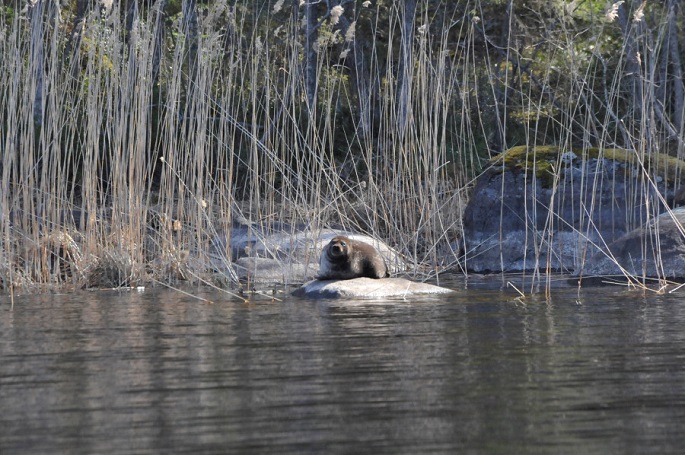2 Saimaa ringed seals relocated to protect genetic diversity
Published : 07 Jun 2023, 22:09
Two adult Saimaa ringed seals were successfully translocated for this spring, said the University of Eastern Finland in a press release on Wednesday.
The seals, known as Amalia and Tuukka were relocated during the moulting season in late May, when Saimaa ringed seals can be spotted resting on rocks.
Amalia, an adult female, was translocated from Pihlajavesi basin to Kolovesi basin, and Tuukka, a young adult male, from Pihlajavesi to the southern part of Lake Saimaa.
“The entire translocation process, including capture, transport and handling, took only a few hours. Everything went smoothly, and a veterinarian was there to look after the seals’ well-being at all times. Both Amalia and Tuukka were very calm about getting translocated,” said Regional Manager of World Wildlife Fund (WWF) Ismo Marttinen, who works as Fieldwork Manager for the seal translocations.
After their translocations, the seals moved in an area covering about ten kilometres from their release points, but during these couple of weeks, they both seem to have settled in a smaller area.
“Amalia has taken a liking to a sheltered bay on Kolovesi, where she’s been resting, and Tuukka is catching fish on the southern part of Lake Saimaa. Both seals have already dived to depths of over 30 metres, indicating that they are foraging in new waters,” said Researcher Marja Niemi of the University of Eastern Finland.
The individuals were identified by their unique fur patterns, and game camera footage provided information on their sex and age group, as well as some information on their background. Amalia (Phs 221) is an adult, slightly older female previously known to researchers, and Tuukka (Phs 499) is a young adult male.
The aim of the translocations is to maintain the remaining genetic diversity of the Saimaa ringed seal population and to prevent segregation into sub-populations.
Studies showed that the genetic diversity of the Saimaa ringed seal population of some 440 individuals is very low and, alarmingly, the population is becoming segregated into sub-populations especially on the southern part of Lake Saimaa and on Kolovesi, where a significant reduction in the number of female seals giving birth is also a cause of concern.
“Amalia will hopefully add to the number of seals giving birth on Kolovesi, and Tuukka will introduce new genes to the southern part of Lake Saimaa. If the translocated seals remain in their new habitats and find partners to mate with there, the positive impact of these translocations will, above all, hopefully be seen in future seal generations,” said Miina Auttila Senior Specialist in Nature Conservation at Metsähallitus, Parks & Wildlife Finland.
The translocated seals’ settlement in their new habitat and life will be studied in many ways in the future. Initially, the seals will be monitored with small satellite tracking devices, which have been attached to their fur and are expected to fall off by next spring's moulting season at the latest. The seals can be monitored throughout their life cycle, and DNA samples enable monitoring to continue to future generations, too.
The Saimaa ringed seals were translocated as part of a project. The University of Eastern Finland was in charge of the translocations, with Metsähallitus Parks & Wildlife Finland, WWF Finland, and the University of Helsinki also contributing. Translocations will continue next year, with possibly three seals to be translocated to new habitats.


